Posts tagged "littleindia"
← All tags
September 29, 2023
Of all of the neighbourhoods in Singapore, I've probably spent the most time in Little India. Not only was I born in a hospital on its edges, I also lived and studied near here for several years. Every trip abroad had to start with a visit to Little India, for foreign currency, electrical adapters, or extra supplies at Mustafa Centre.
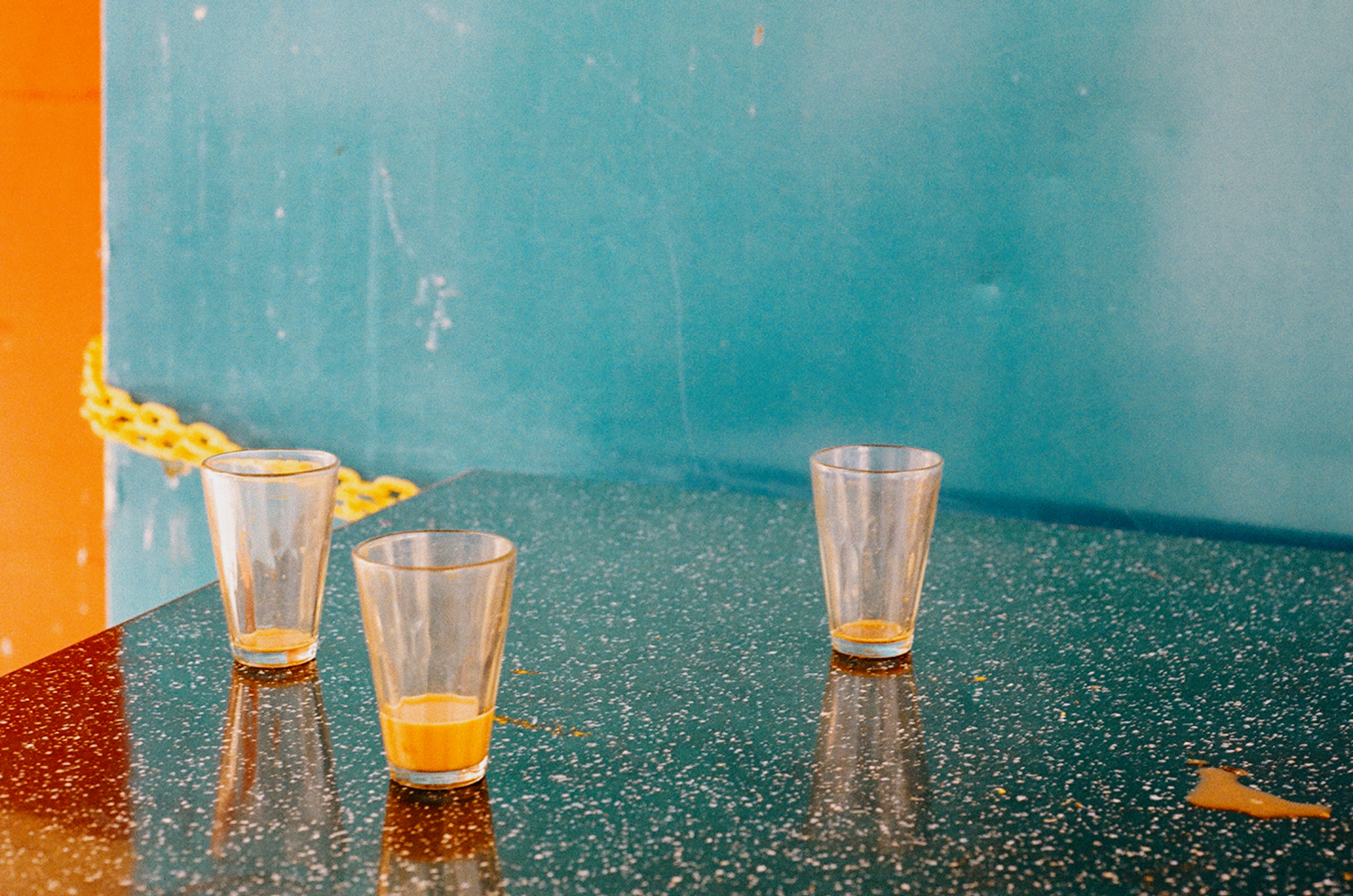
Filter coffee.
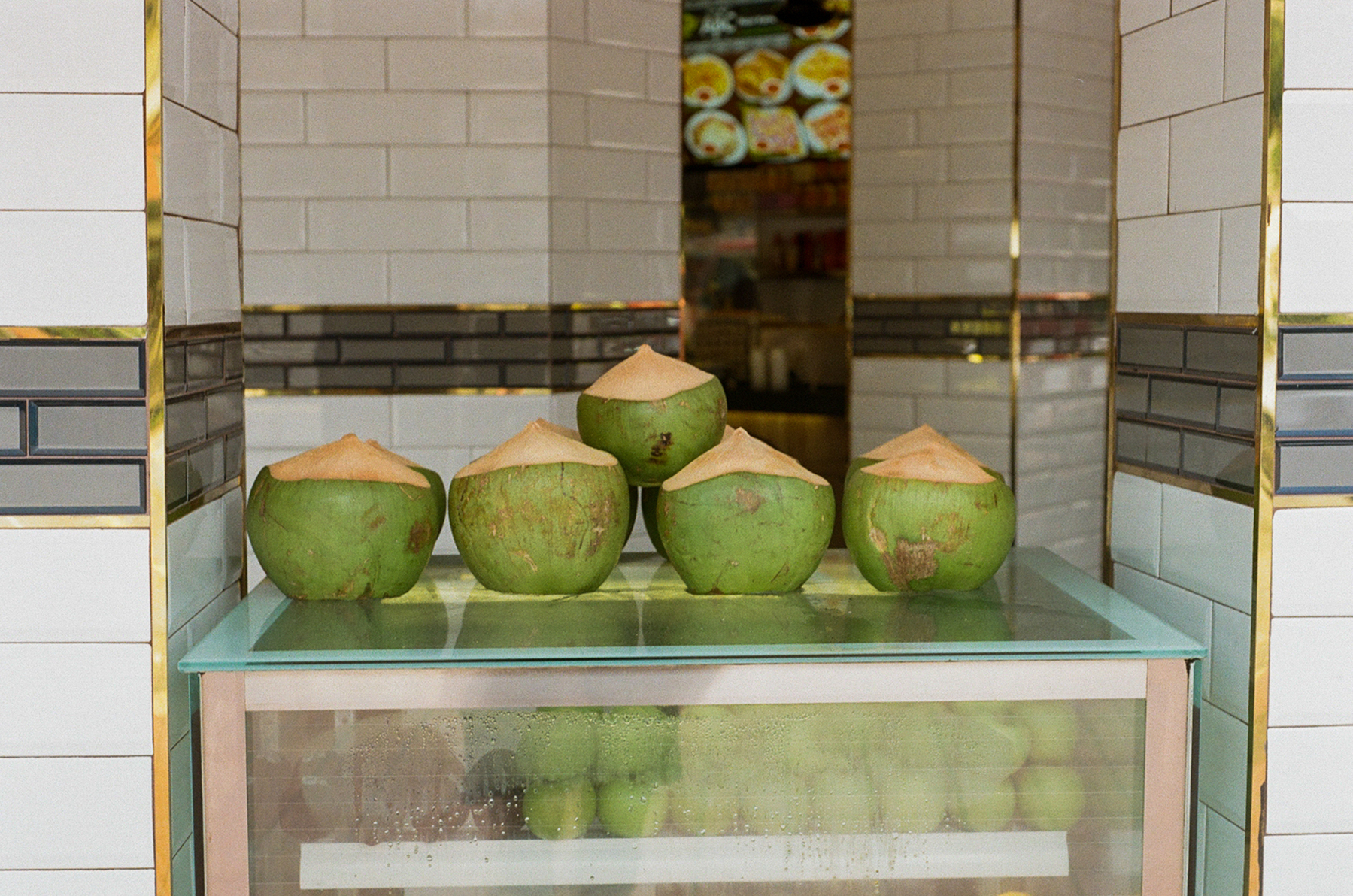
Coconuts.
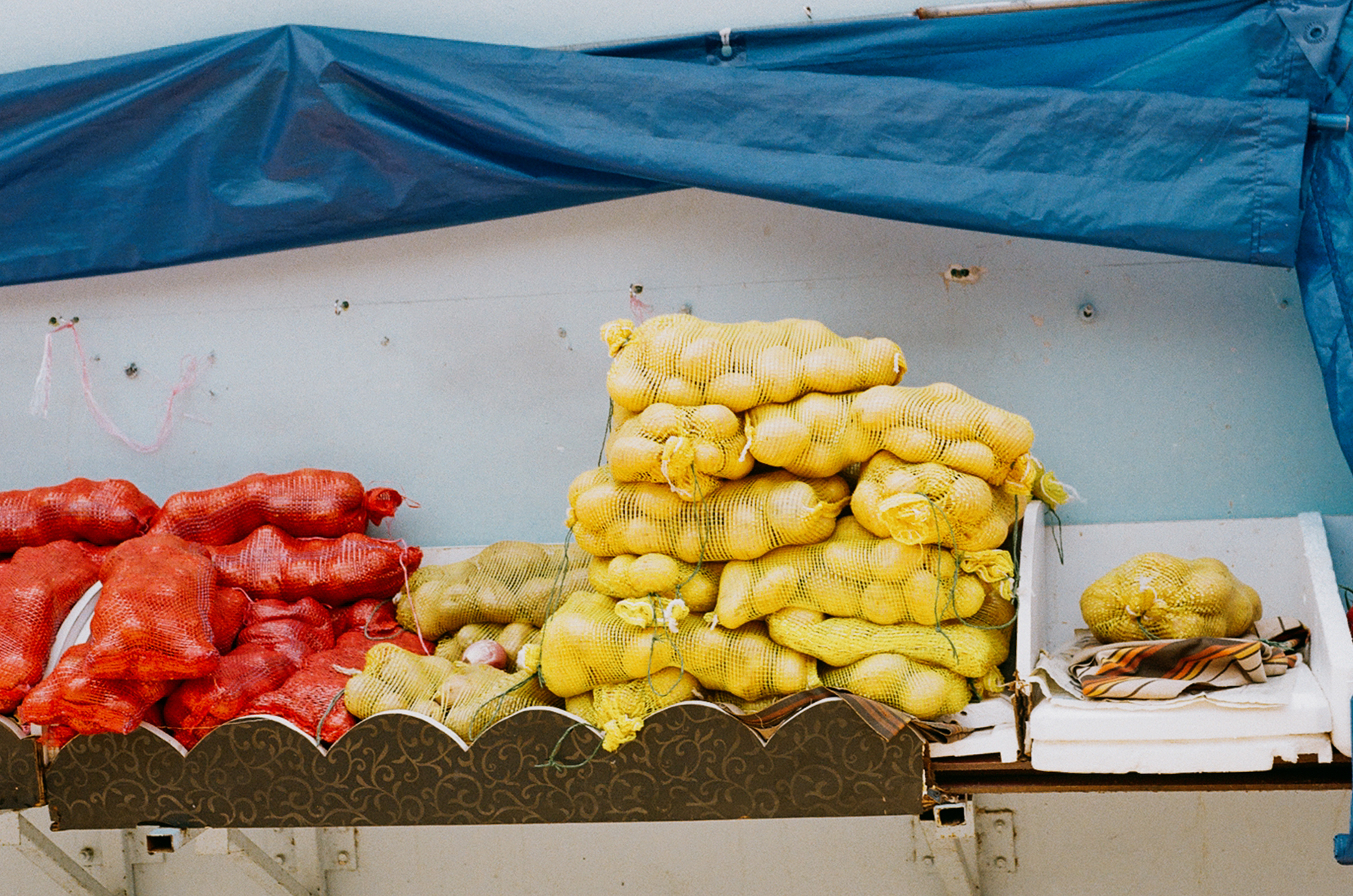
Aloo pyaz.
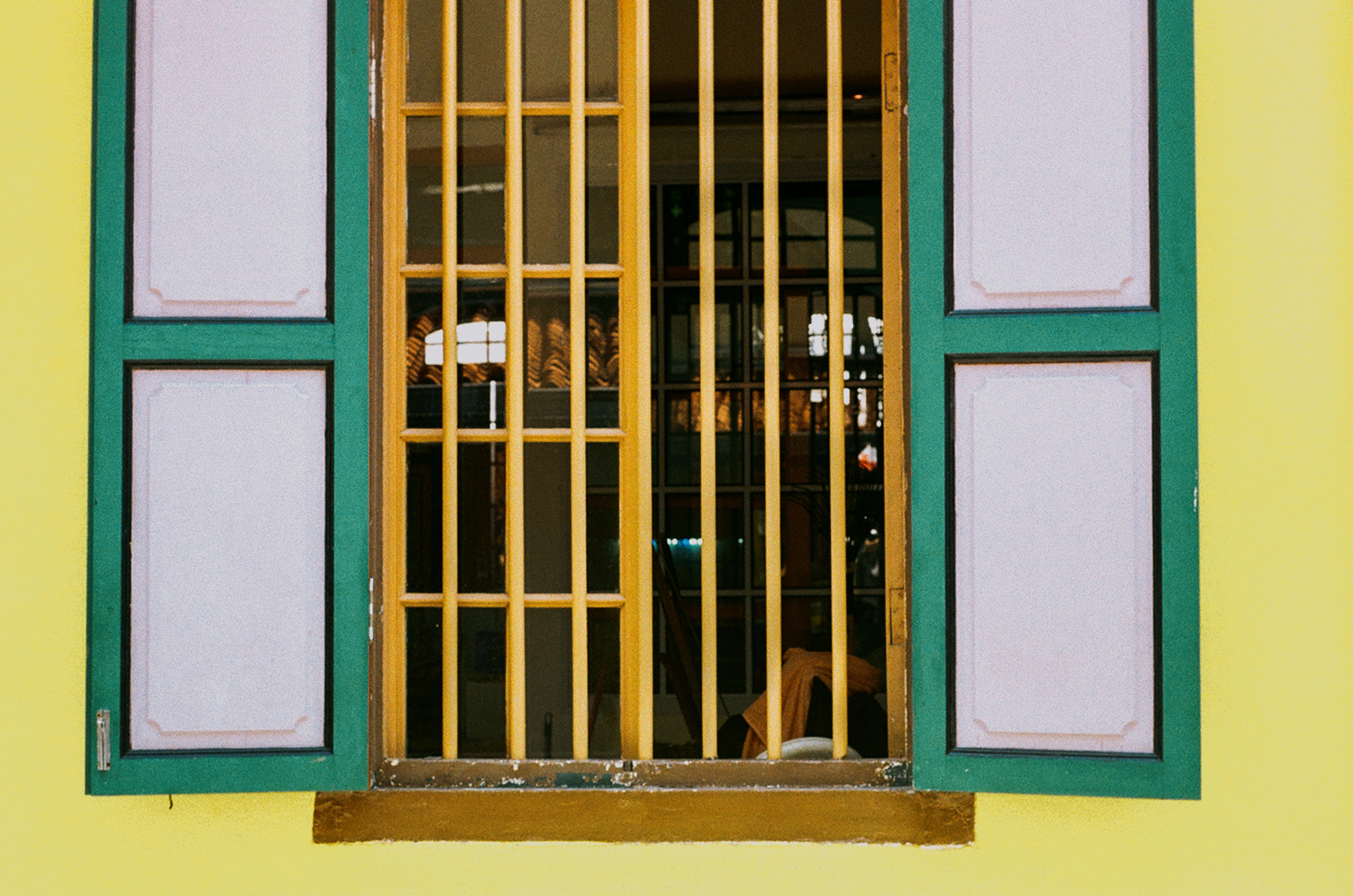
Windows.
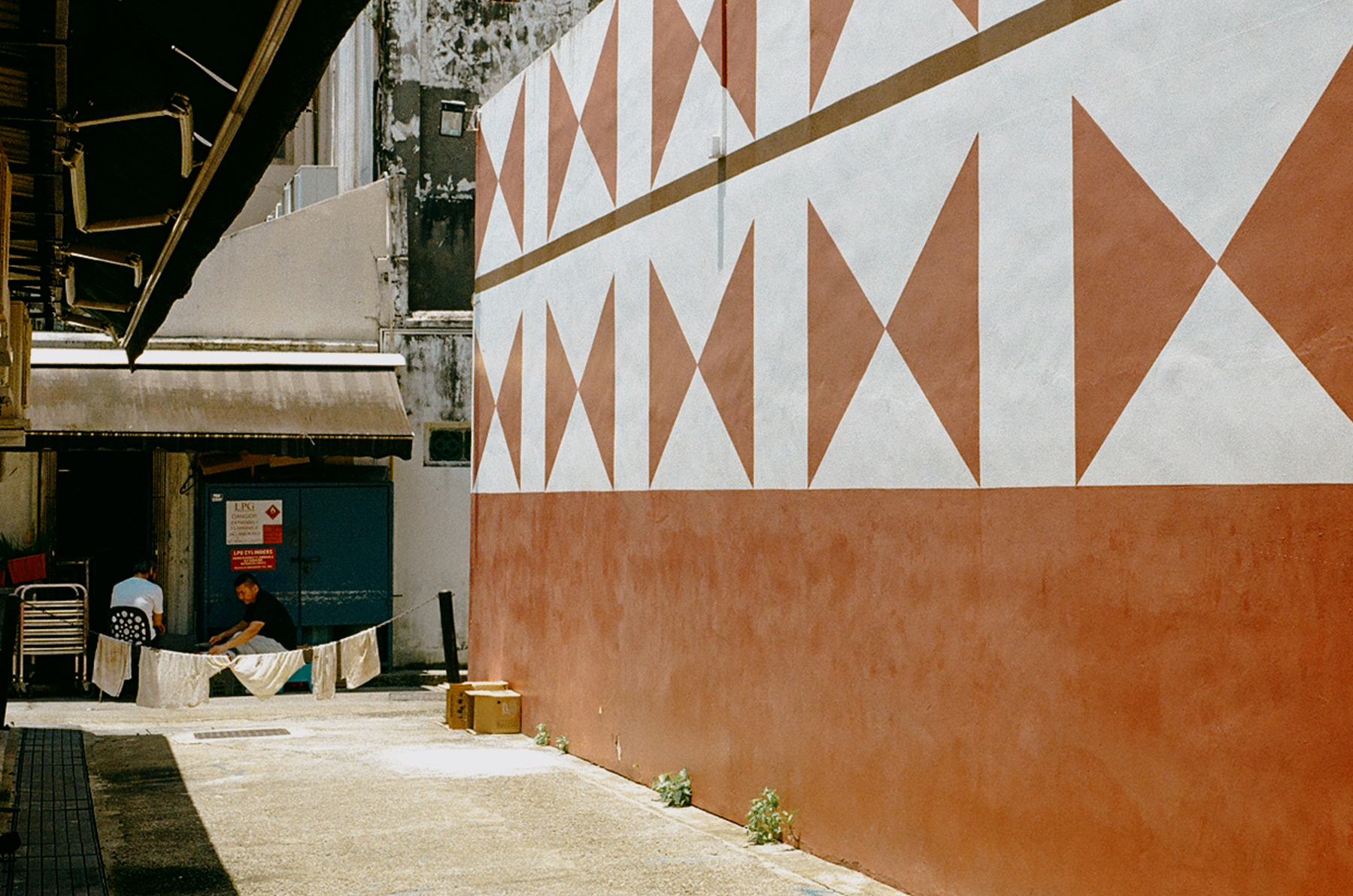
Alleys.
All photos taken on Nikon FE, 50mm, Kodak ProImage, dev and scan by Triple D Minilab, Singapore.
September 22, 2023
I lived in the Prinsep Street / Bencoolen neighbourhood in the early / mid 2000s. I've always enjoyed the vibrant street life. It is close to everything I love: Little India, Arab Street, Sim Lim Square, Sim Lim Tower, Burlington Square, and more. From early morning till late night, there's always something fun to do and see here.
On my first full day back in Singapore today, I walked from Whampoa to Bencoolen then to Orchard Road. It felt like I got to see some of the same places and people (popped in to many of the film photography stores I used to frequent). As with everything else about this place, everything has changed. But Bencoolen Street is still the place of temples, synagogues, churches and street life that I remember it to be.
I even got my film developed and scanned in 3 hours (shout out to Triple D Minilab)!
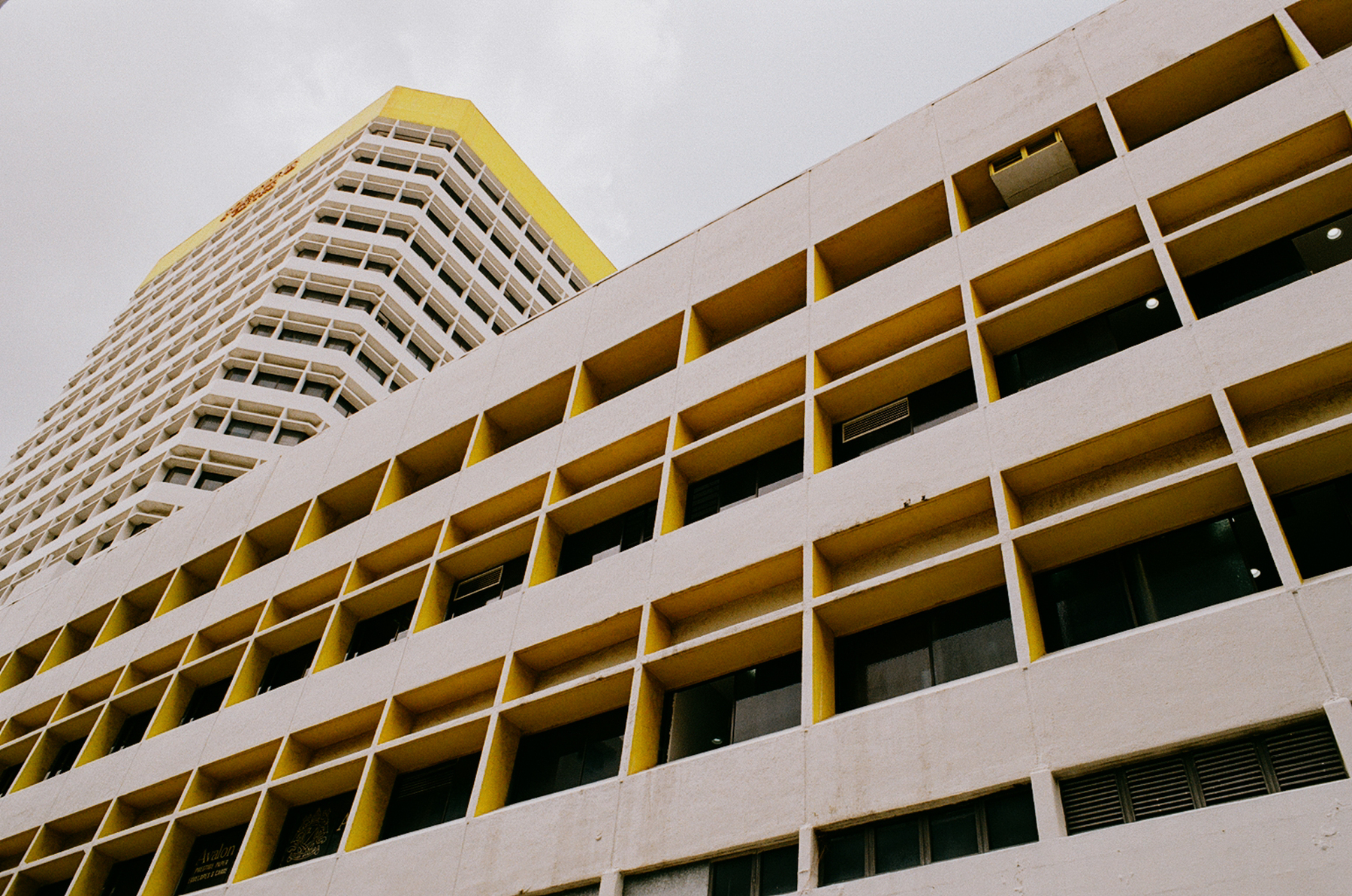
Windows.
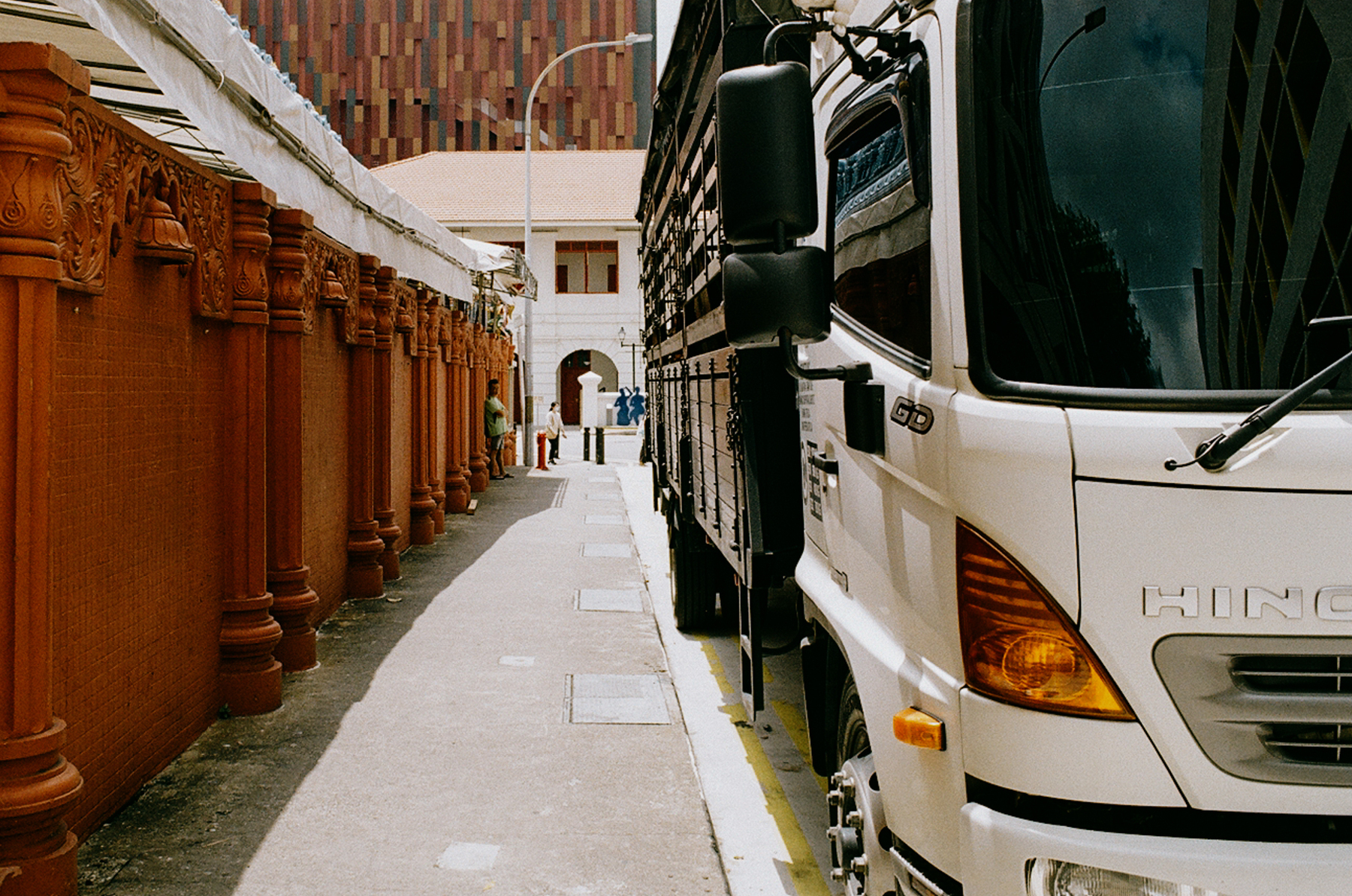
Temples and trucks.
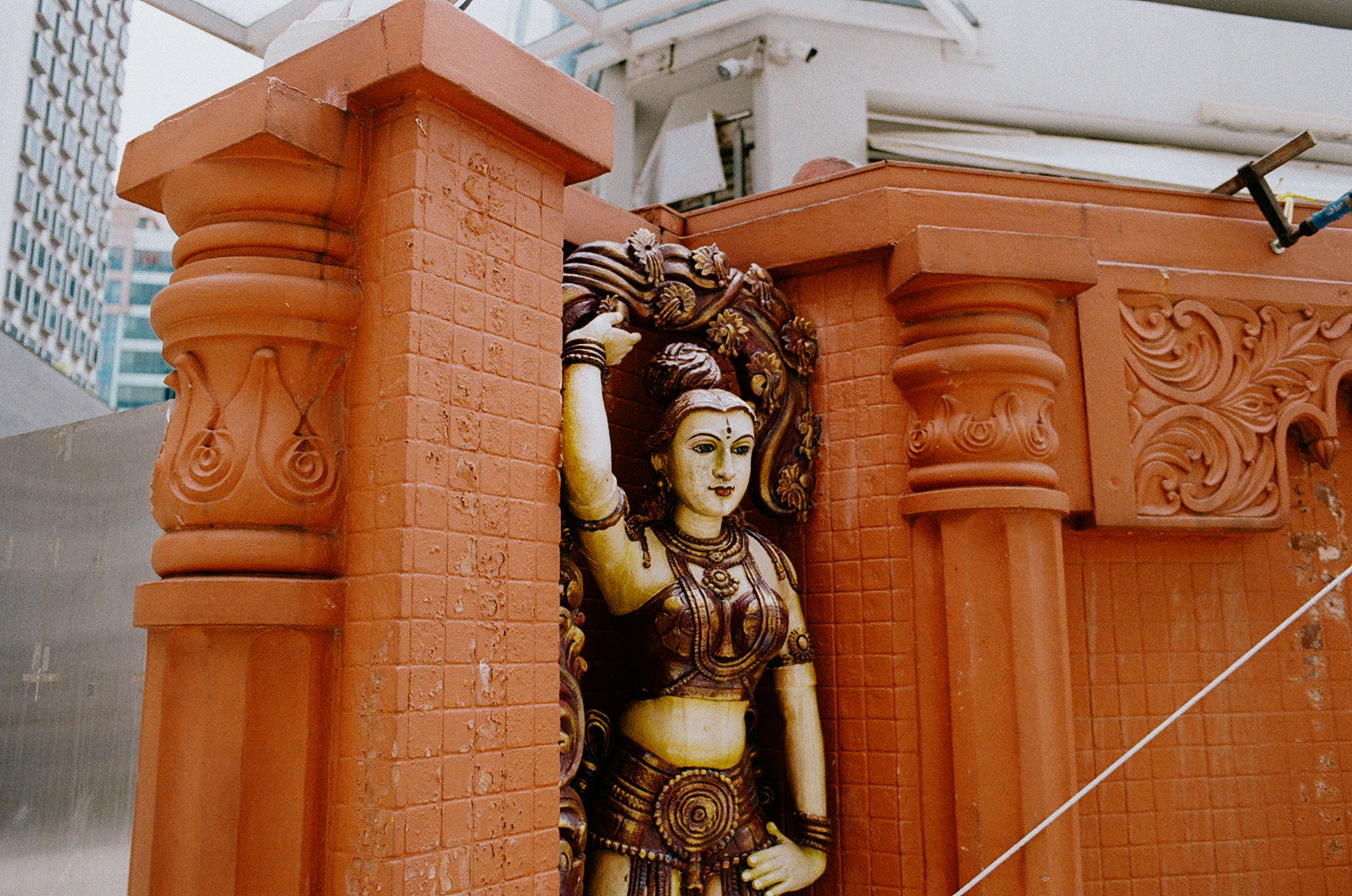
Deities.
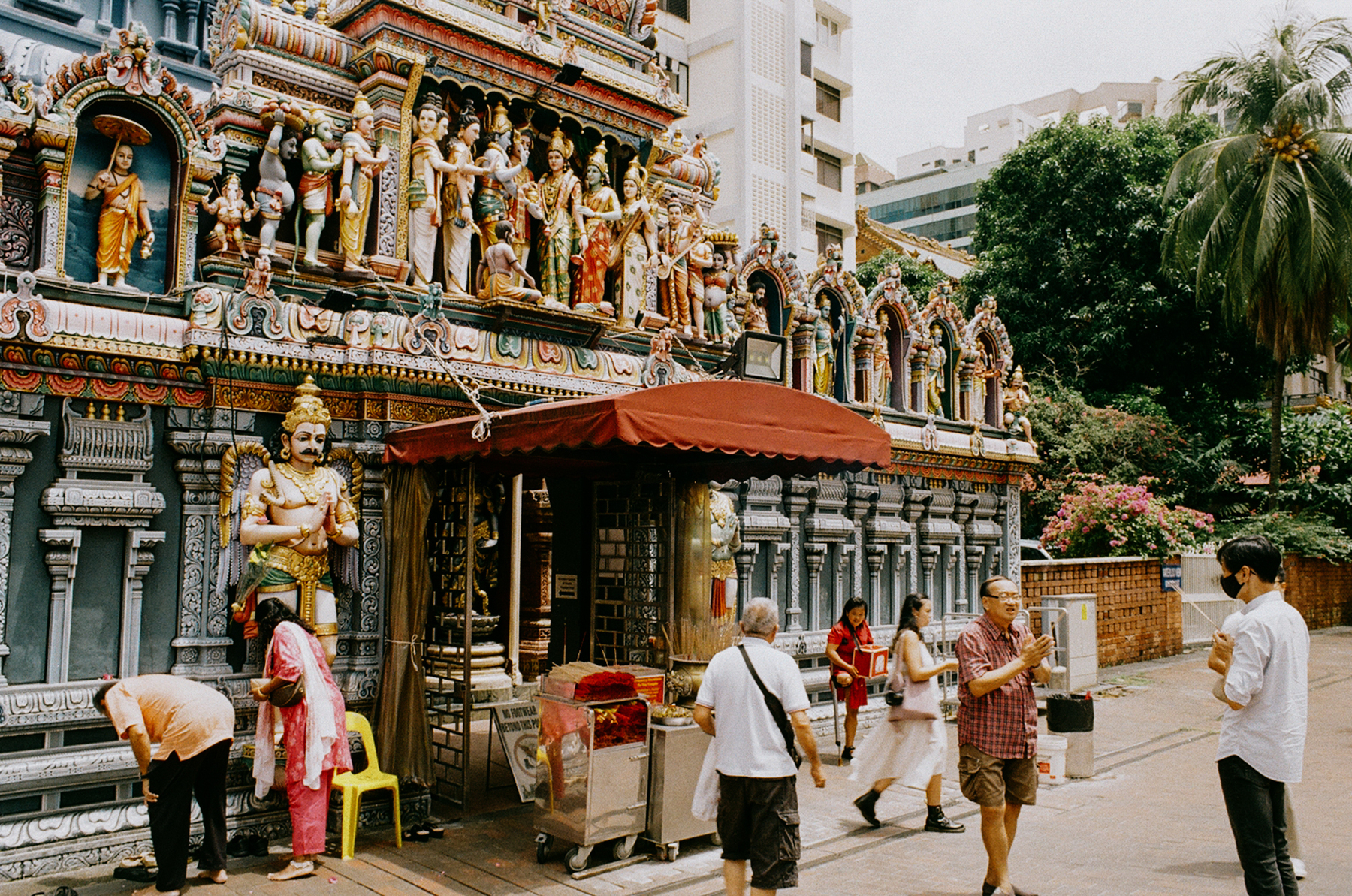
Prayers.
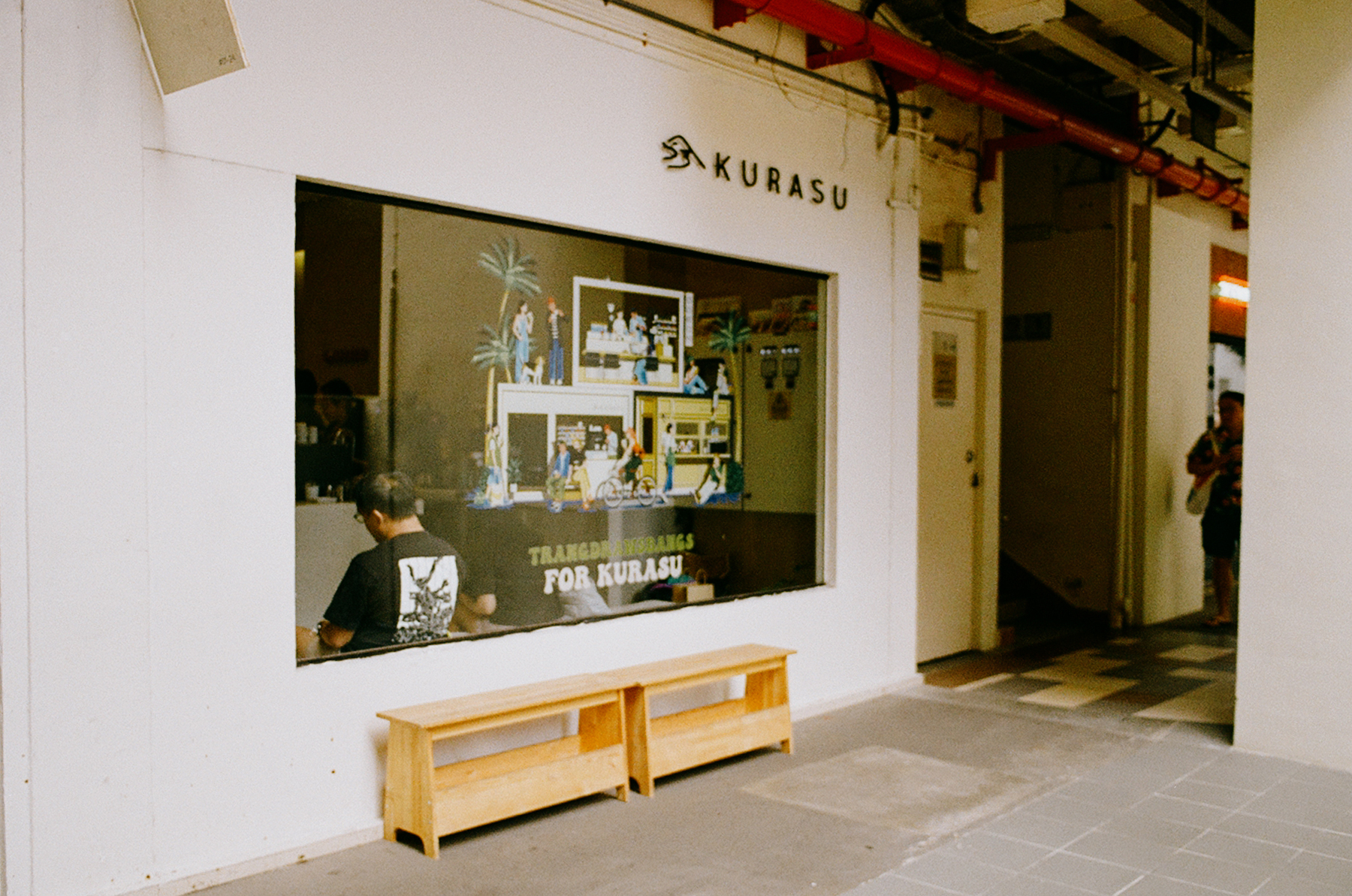
Great coffee.
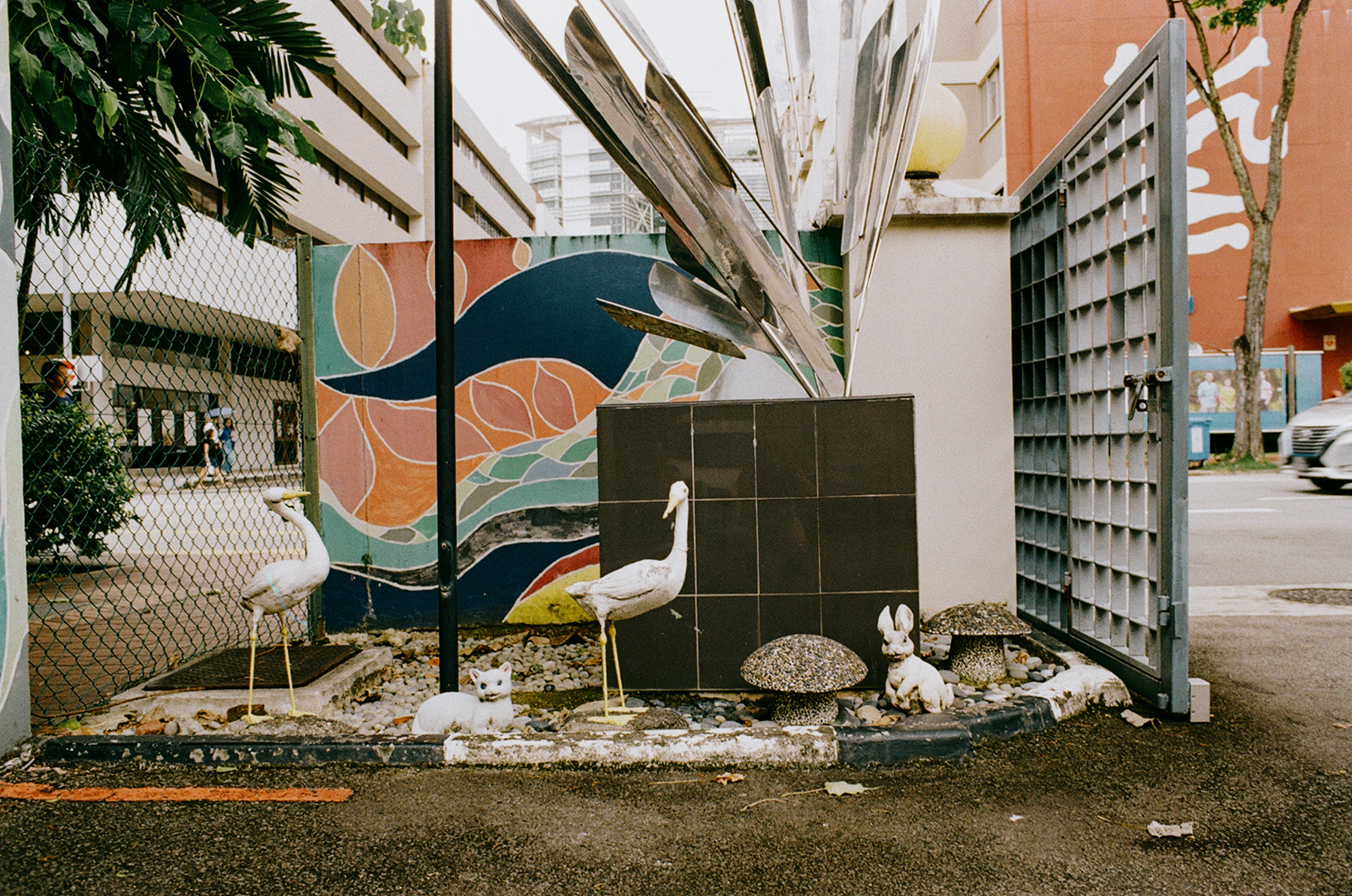
Cats, swans, rabbits.
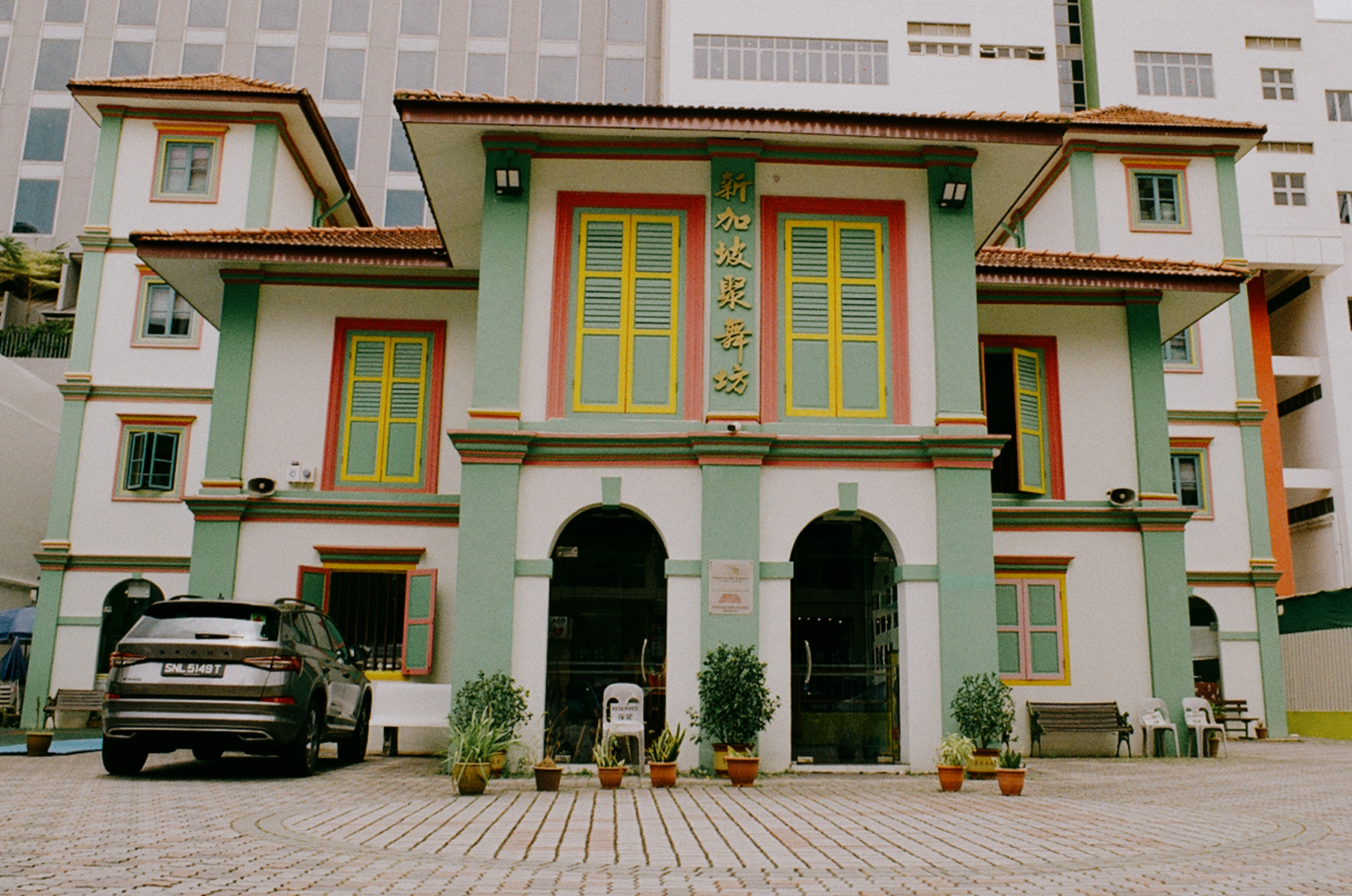
Heritage.
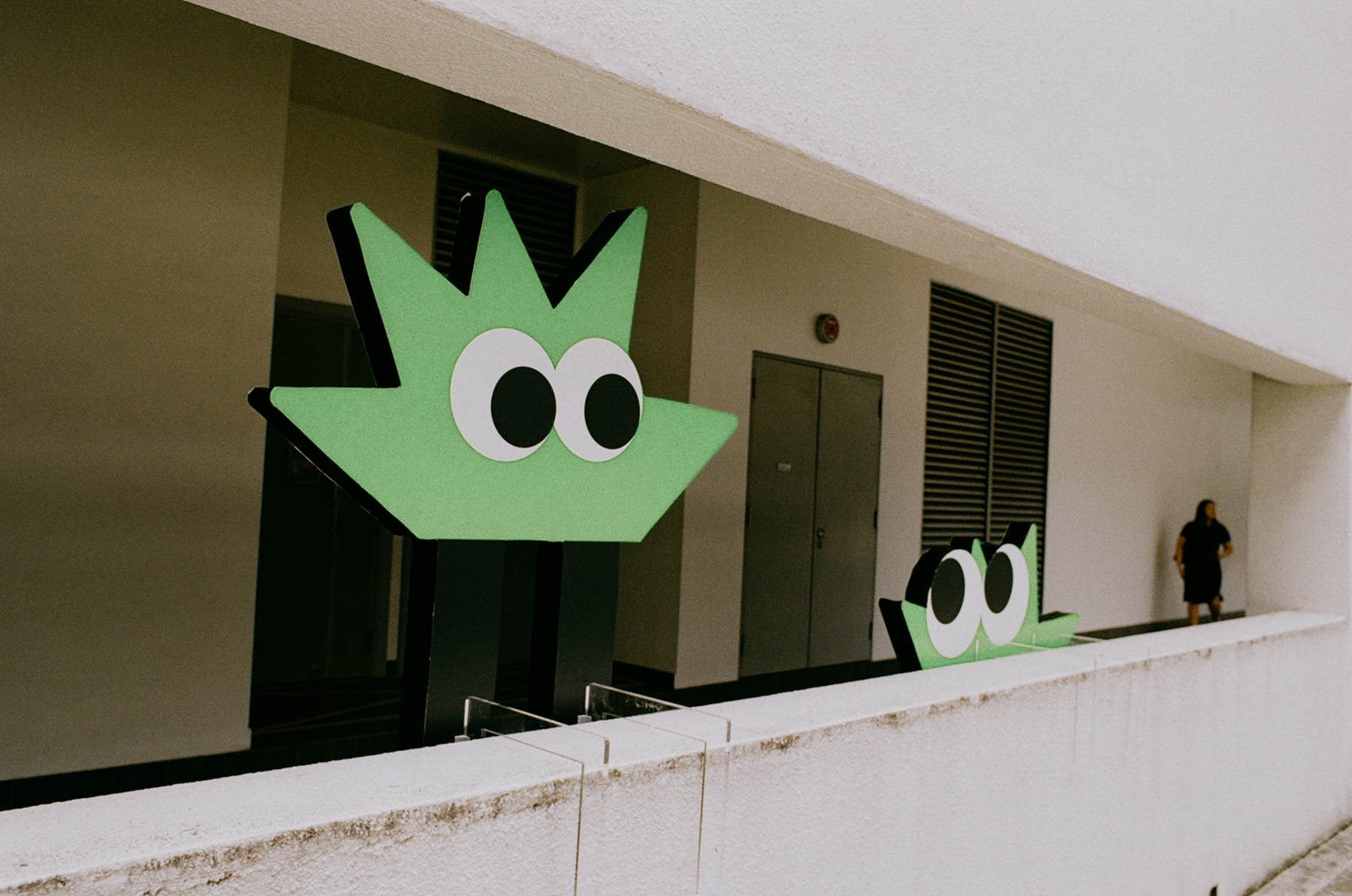
Googly eyes.
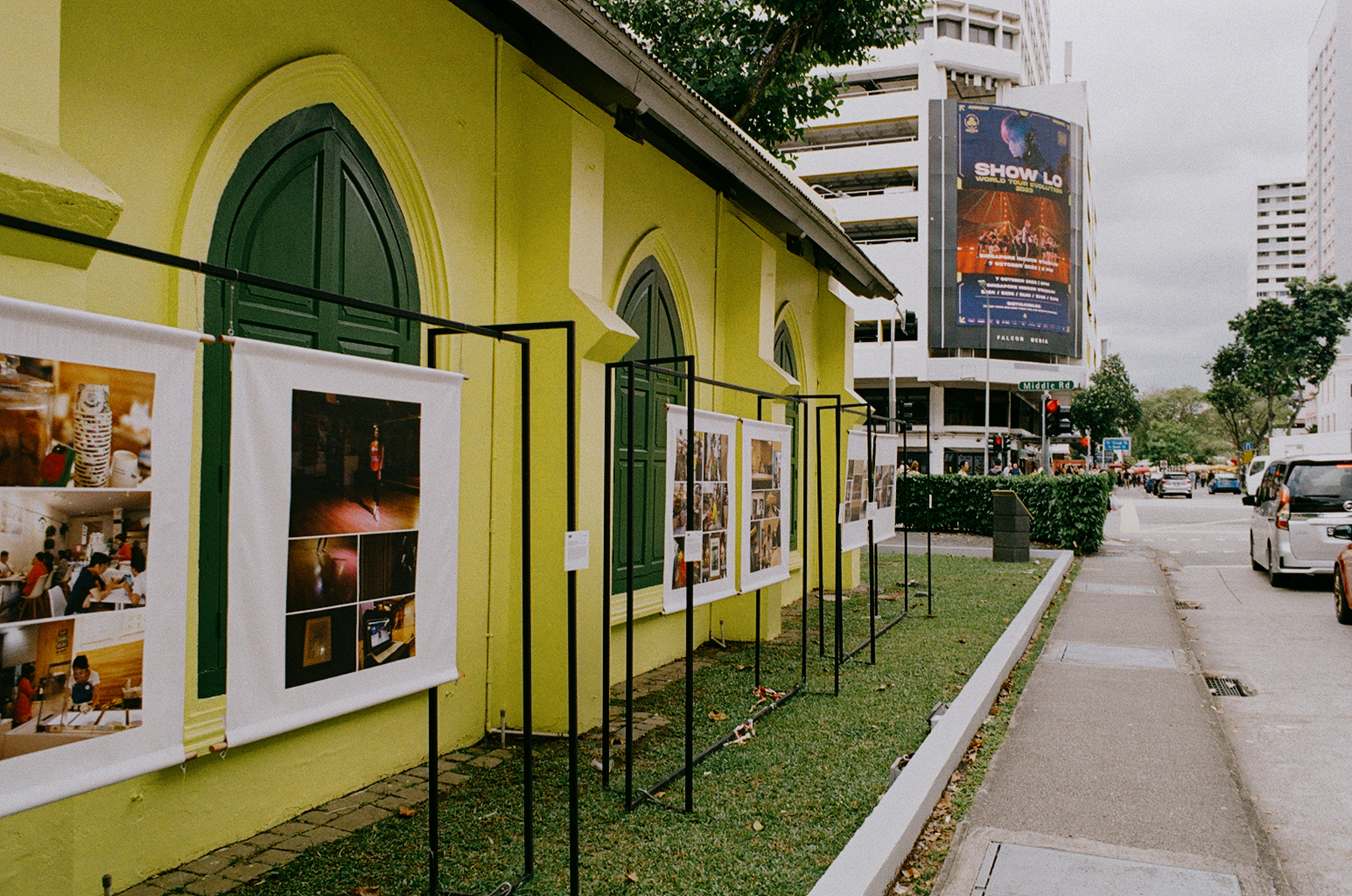
Green.
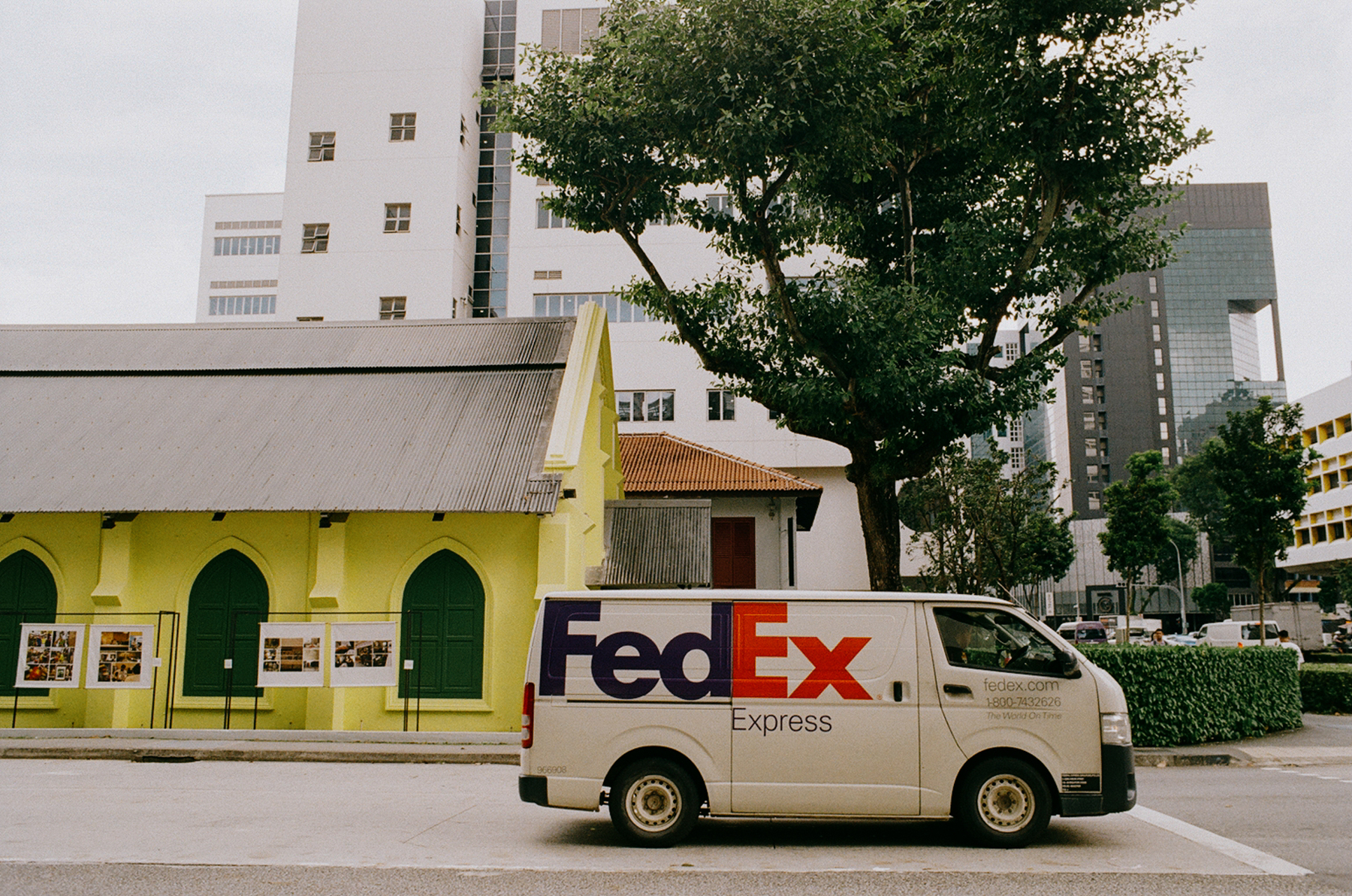
Objectifs, a non-profit arts space dedicated to film and photography.
September 12, 2023
The last time I was home in Singapore, I did one of my favorite alone activities: I walked a lot, and ended up in Little India. I did a 7km walk starting at sunset, and wound up there just in time for all kinds of fun. Since Mustafa Centre is 24 hours, and my favorite naan shop (Usman, along Desker Road) is open till 3 or 4, I am never in much of a hurry.
It was also mango season.
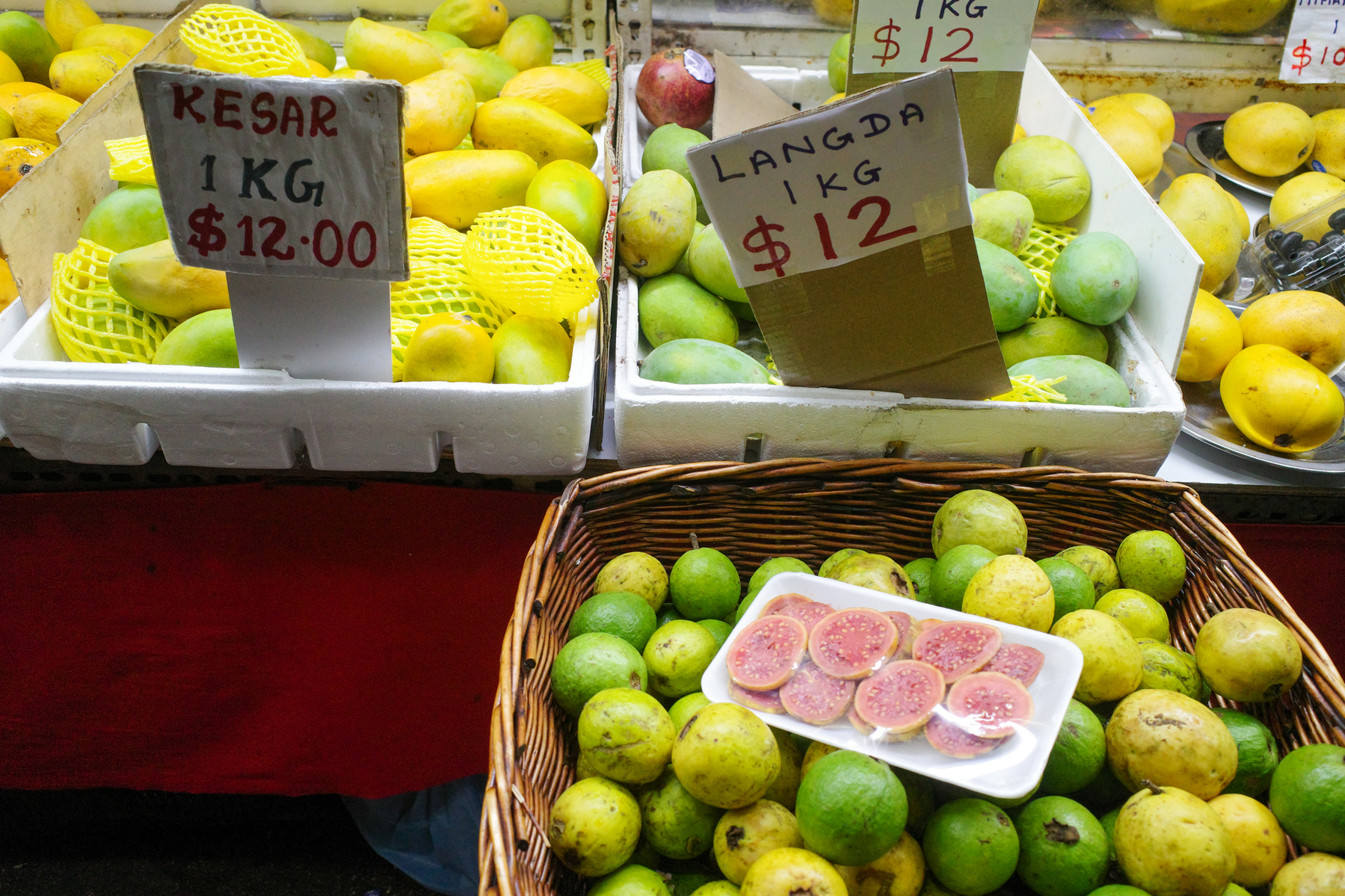
Mango season is my favorite season. And when that happens, I prefer to be in India or Singapore. (More on mangoes here)
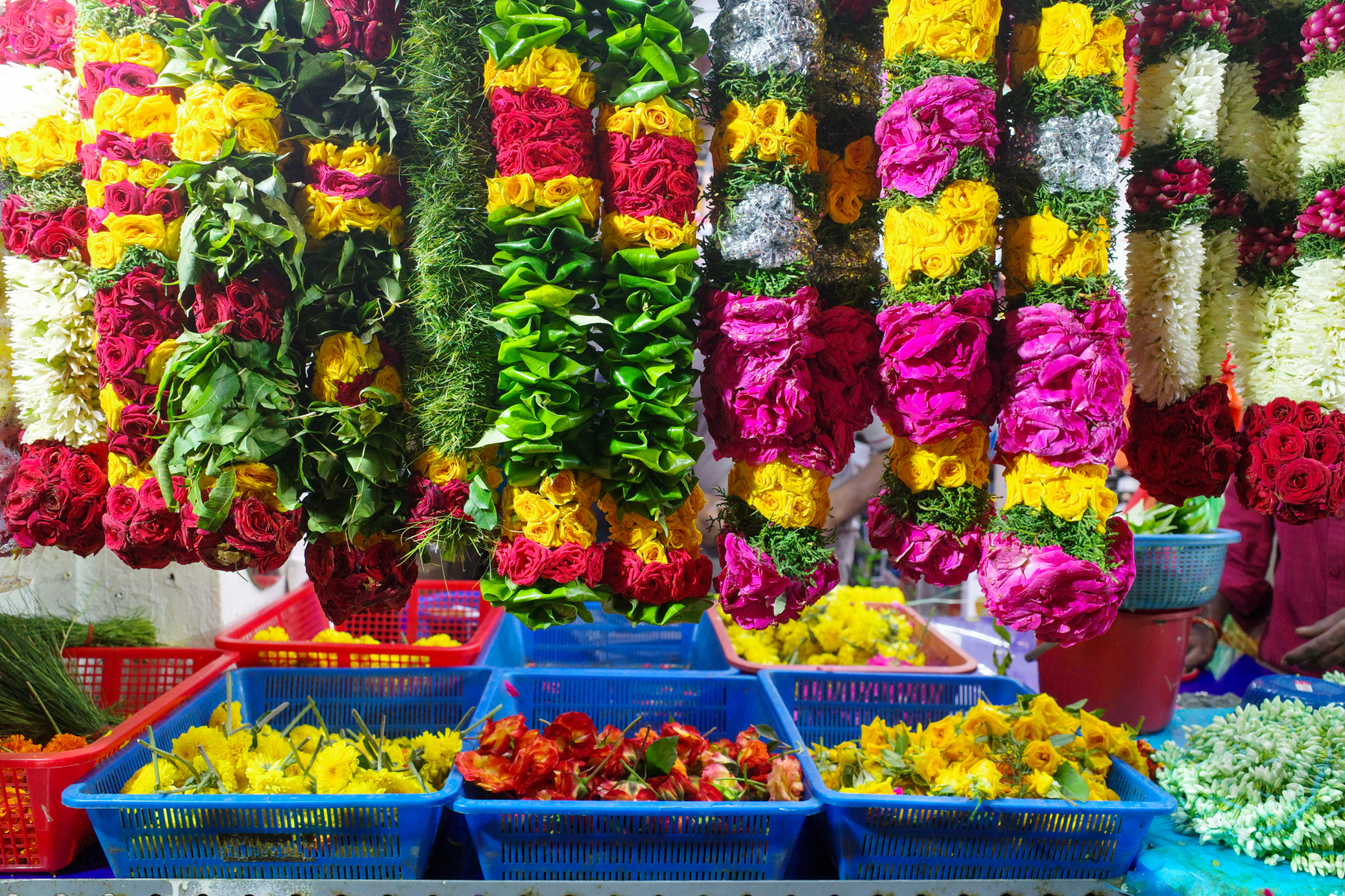
The smell of jasmine flowers tells me there are devotees and a temple nearby. It also smells of home.
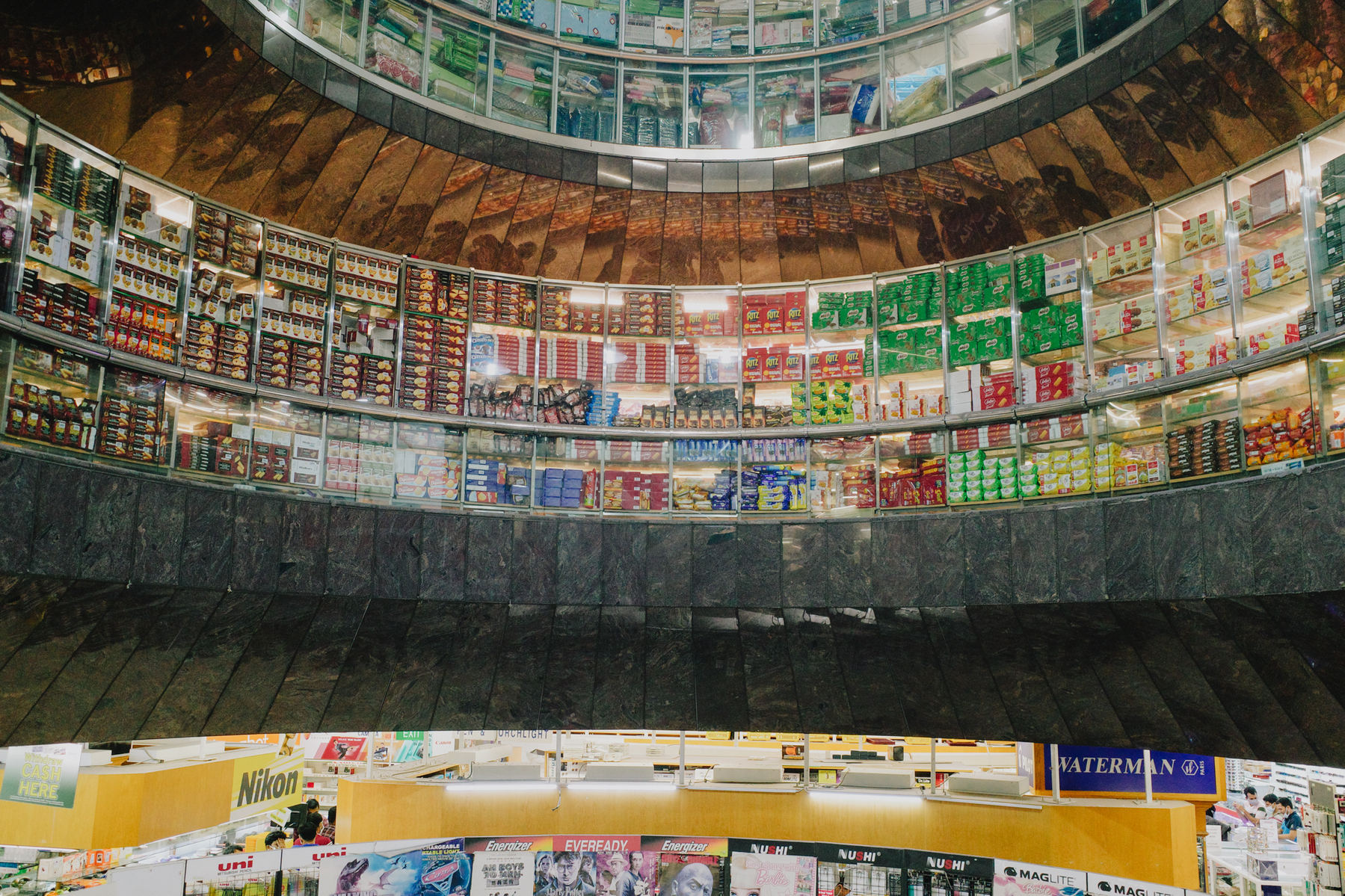
Mustafa Centre. How do I even describe how much I love it?
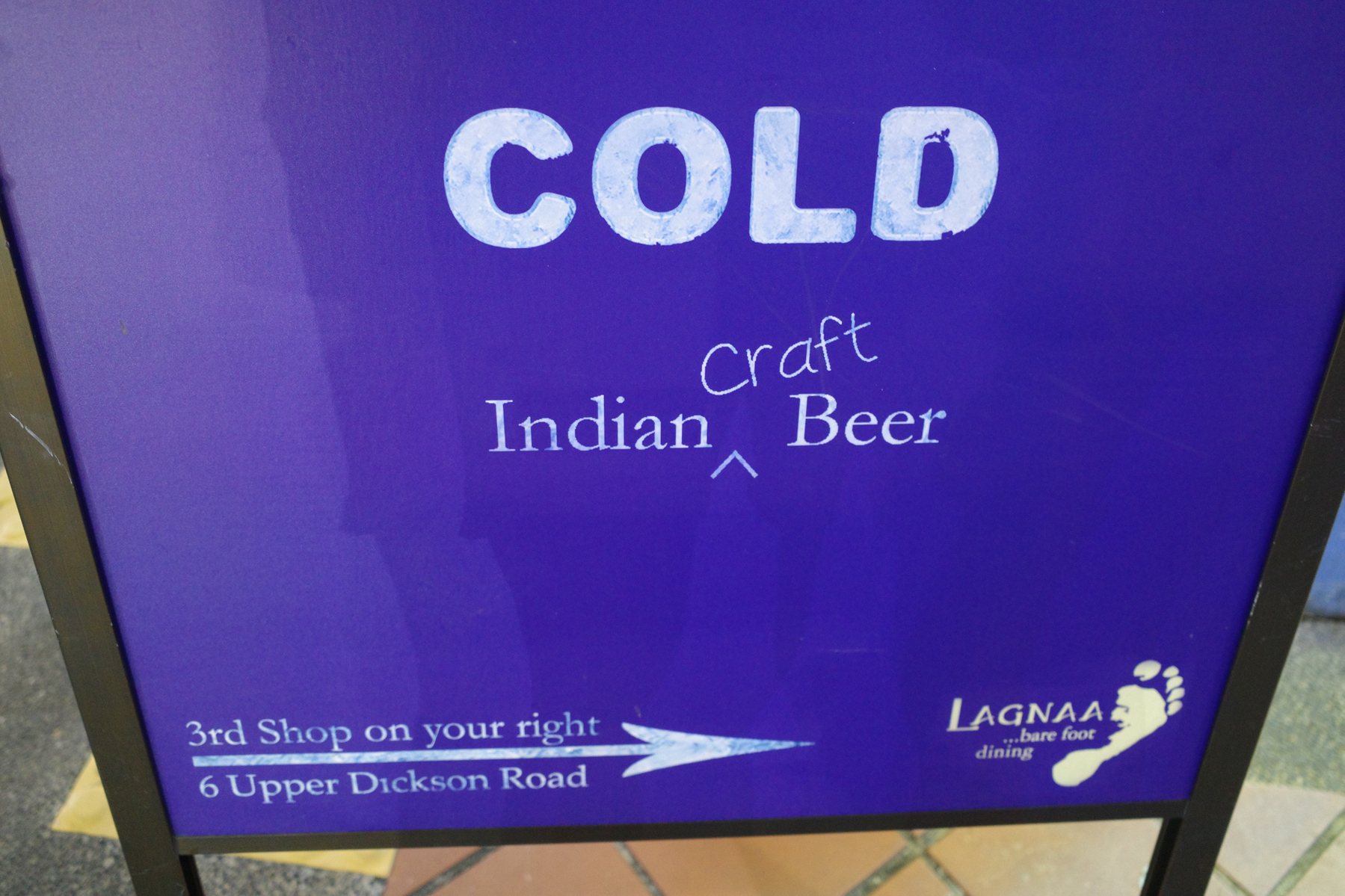
I would have loved this, if I was still into booze.
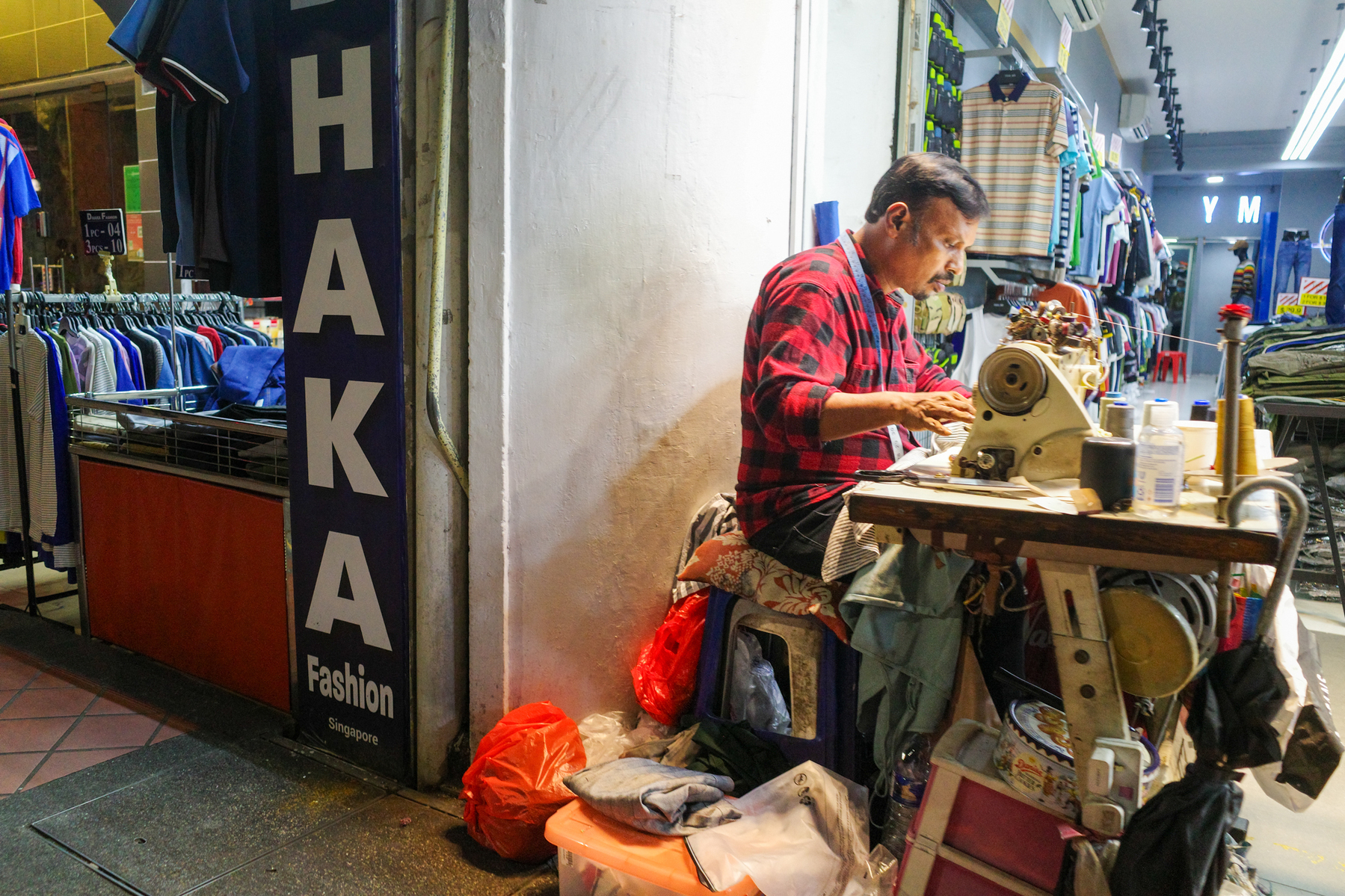
I've always loved this neighborhood the most because of all of the street life.
(All photos taken on Ricoh GR III)
June 11, 2023
When I was growing up in Singapore I loved going to Kampong Glam, the Arab quarter.
The British colonials divided the country's ethnic population into different sections, keeping the best and most central downtown location for themselves and for their buildings. Everybody else had to cram into their own ethnic 'ghettos' with varying degrees of sanitation, cleanliness and facilities.
The Arab population in Singapore largely came from the Yemeni city of Hadramaut as traders. Soon, they married the local population, and formed their own plural Southeast Asian Arab identities, but you can still see their hallmarks in the food, architecture, languages.
As a teenager and young adult I loved spending time in this neighborhood. It was a lot less sterile than the nice, clean parts of town that we loved to show off to the world. It had a soul. It still does, but these days its success (Haji Lane was recently named one of the most interesting districts in the world to visit) means it's changed a fair bit. I still enjoy meeting friends at the unnamed sarabat tea stall, I still have a bunch of fave spots that remain, thankfully, relatively unchanged.
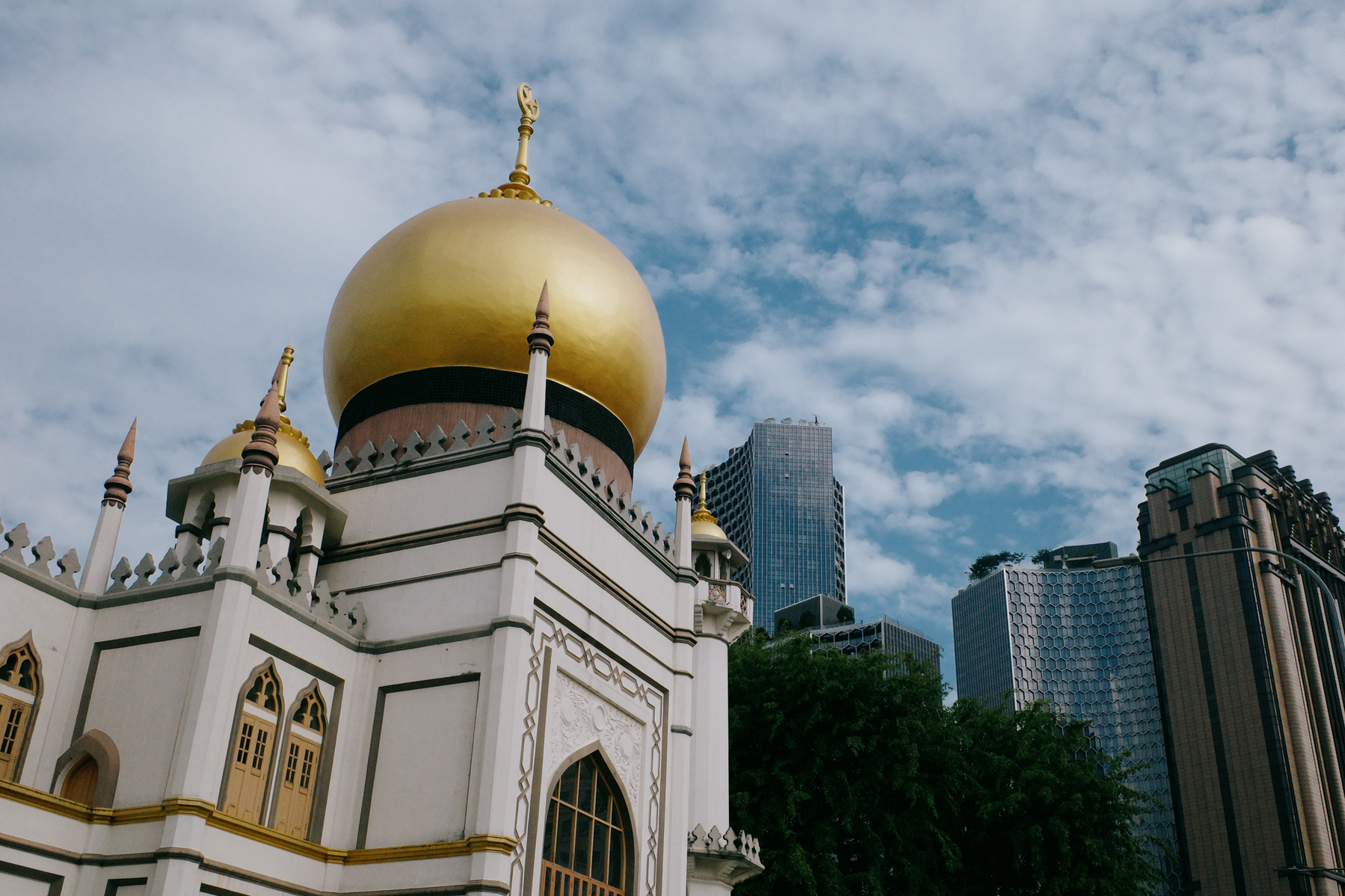
Faith and fortune: a view of Sultan Mosque in Singapore's old Arab quarter. In the background, the eccentric Park View Square building that is also home to Atlas bar, one of the best gin bars in the world (and also where Thandie Newton and Vincent Cassel had a scene in Westworld Season 3). SE Asia has a significant Arab population, descendants of traders from Hadramaut in Yemen, esp. in Singapore, Malaysia, Indonesia.
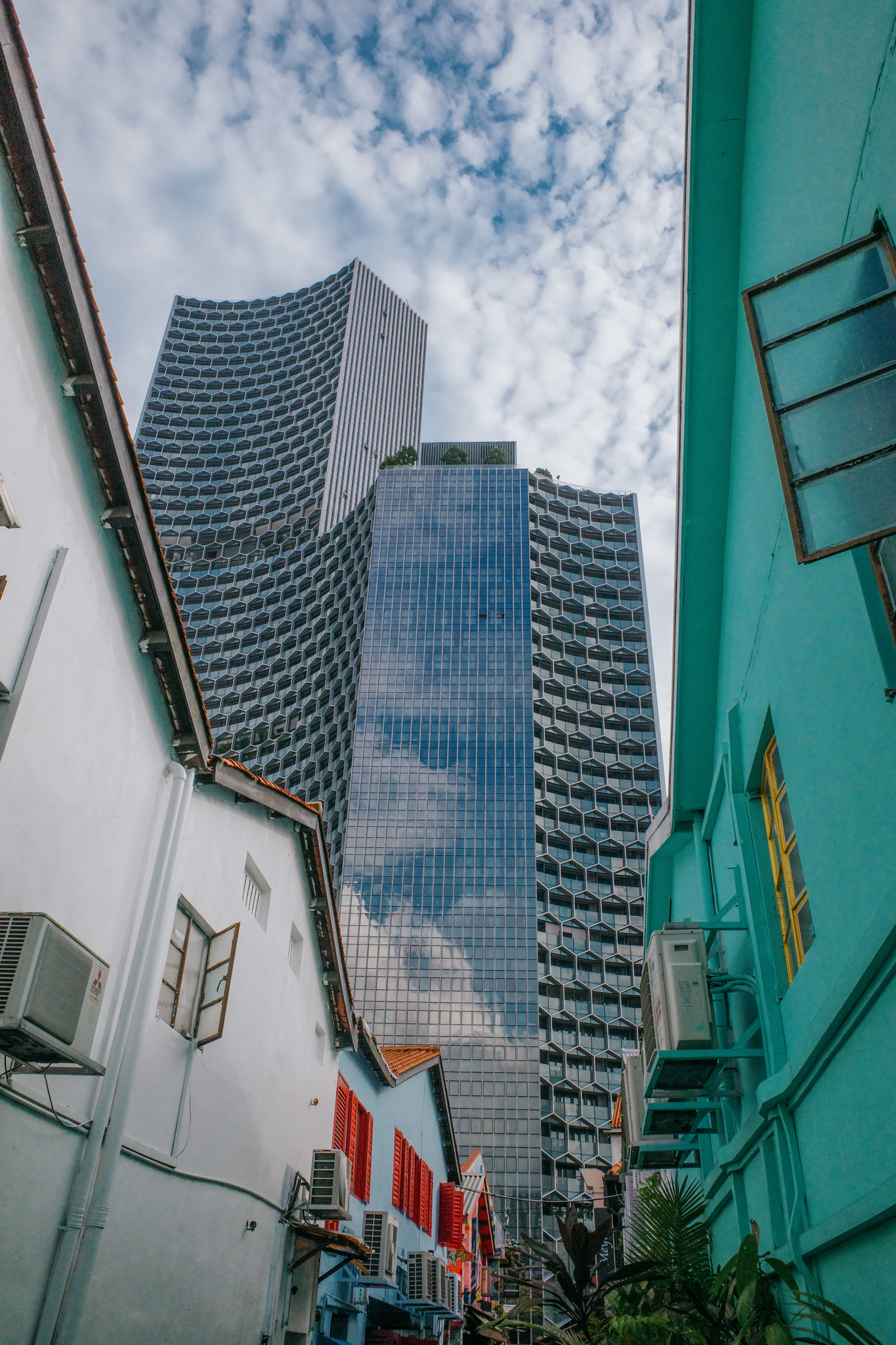
I'm interested in the contrast of eras, architecture, vibes. Also in how quickly all of this came up: just a decade ago I would be in this alley and I could have sworn that tall building, a hotel, did not exist at all, even as an idea.
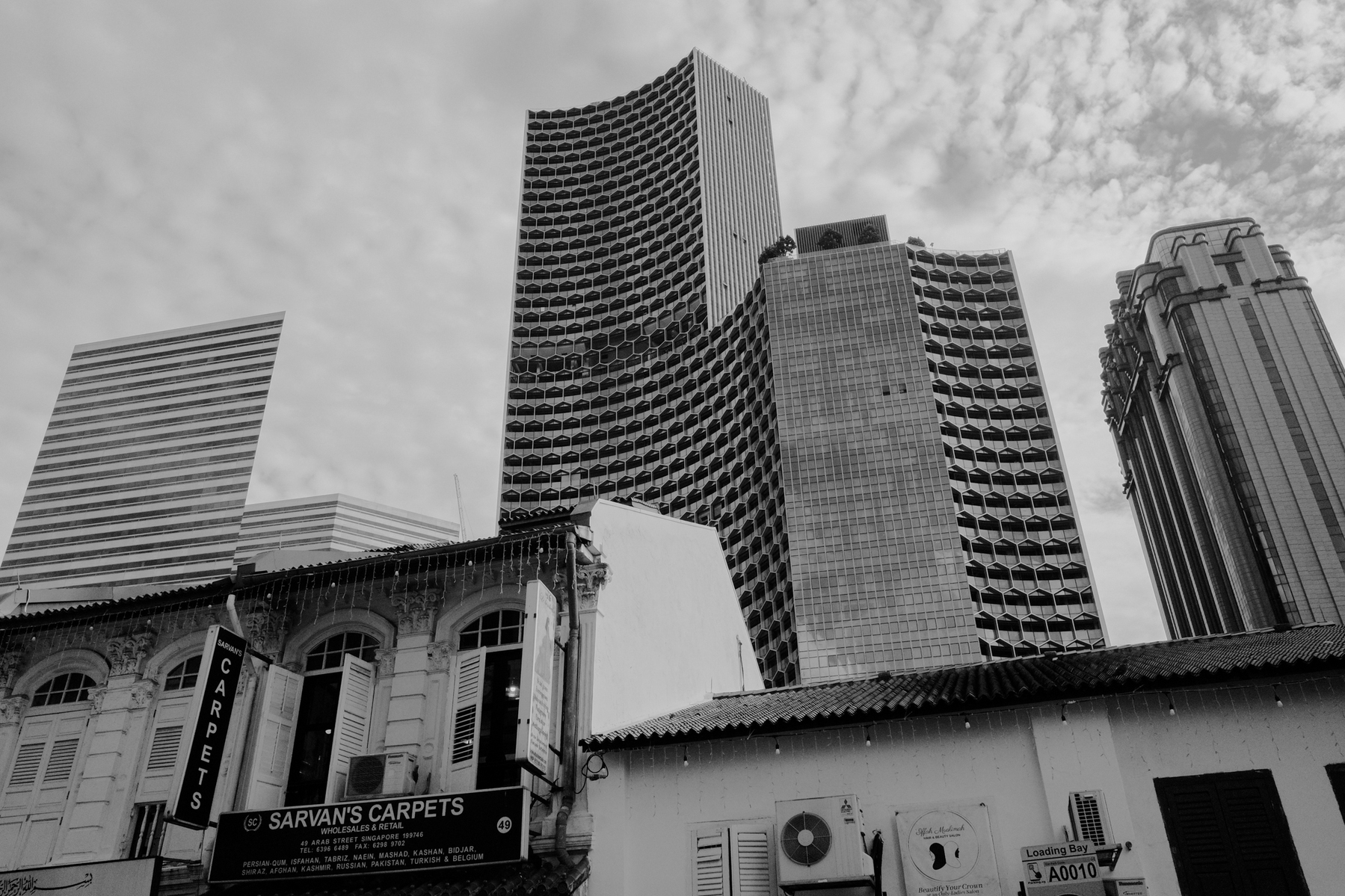
More contrasts. In the foreground, some old shophouse buildings in the Arab quarter. In the background some modern buildings including I.M. Pei's Gateway building in the back left.
(All photos taken on Ricoh GR III with RNI presets applied.)
July 19, 2012
Closure of donation drive: TWC2 will stop collecting donations for the victims of the #downtownlinetragedy tonight (Friday 27 July 2012, 2359hrs). For more information please read this link
Edit: The Paypal link we previously posted isn't working. To donate via Paypal, please to go the donate page on TWC's website, and click the Paypal icon there.
Clarification: Questions have been raised in various comments about the commission we mention here. Just to be clear, the commissions are charged by the various online payment platforms. We do not receive a single cent or even come close to looking at it. It's all run through a registered non-profit.
It is with a heavy heart that I write this post. This morning, we awoke to tragic news that two workers had died while building the Downtown Line in Bugis. They were buried alive by cement while pouring wet concrete into a mould. The scaffolding collapsed. They were stuck in the cement and the rescuers had some difficulty prying their bodies out. Investigations are now saying that the wet concrete was almost as heavy as a swimming pool. (link) Whatever the outcome, and whatever its impact on our labour practices will be, there is simply no other way to put this: these guys came here to build our nation, often at great risk to their lives.
Singapore is what it is today because of the migrant workers that have built our structures, poured our wet cement while we were sleeping, dug and laid our roads. It was true when it was Samsui women doing that, and it is even more true now that we have migrant workers from China, Mongolia, India, Bangladesh and other countries coming here in droves in search of a better life, offering their services to us at minimal cost and maximum risk.
As Miyagi said, these guys are doing our national service.
A bunch of us spent all of this afternoon trying to figure out how we can do our part to help. We spoke with various government ministries, who are doing what they can on their part, and to organizations. The organization Transient Workers Count Too, which promotes equitable treatment for migrant workers in Singapore, stepped in. They've offered to take in donations for the victims. I must stress that as a non-profit registered under the Societies Act with experience in managing and disbursing donations, they have the structures and practices in place that Miyagi, mrbrown and I do not have. If you have queries about the accounting practices and methods of fund disbursement, feel free to reach out.
In the meantime, what we would like to do is to create an avenue for those of you who want to help to do so. The money goes towards the families of the two deceased workers, as well as to the injured workers who are unable to work while they recover.
This is how you can donate:
BY CHEQUE:
Make a crossed cheque payable to: ‘Transient Workers Count Too’, write your name and “Bugis MRT Accident” at the back of the cheque and mail it to: 5001 Beach Road, #06–27 Golden Mile Complex, Singapore 199588.
Send an email to info@twc2.org.sg with your name, cheque no., amount and “Bugis MRT Accident”, so that the donation can be properly recorded and a receipt sent to you.
BY SGGIVES (ONLINE)
You can donate using your credit card here. A small commission is charged by this donation collection agency. Under the “Special Occasion / Person” field, type “Bugis MRT Accident”.
BY PAYPAL (ONLINE)
You can use your Paypal account or credit card to donate here (scroll down and click the Paypal button). However, a commission of 4% or so is charged on every donation. There is no field for you to input the purpose of donation, so it is advisable to drop twc2 an email after you’ve donated by this method.
Whatever small amount you can offer goes a long way.
April 22, 2008
My city is often made out to be a boring business city, sterile and lifeless. Not entirely. No amount of protestation at how we’re really unique, though, is effective in driving home the truth about (some parts of) my city — how there are bits you can really love, if you look hard enough.
My city, tonight, started off innocuously enough, with a solo train ride back to the city from the airport. Wondering around the east, feeling like I’m exploring a new country altogether, one I only go to in order to leave and return to the country, before running back towards the familiarity of the places I know and the places I love.
Little India was my first love. It was here where I wandered about, as a kid visiting relations, demanding ice cream and discovering kulfi, my first taste of something new, different, bold — pistachio, spices, cream, all the better to quench the heat. Then as a teenager, discovering the back roads of Little India, talking to everybody, wandering into every shop; how I can always count on being fed for free by Indian hawker families who now treat me as their own niece, how after twenty years, I am still in awe, still finding new places, new tastes, and new people. Then going to places like Triplicane, Chennai, and feeling entirely in my element, knowing where to find things and occasionally, what to say.
Then Arab Street, adjacent, separated only by that canal. It is a walk I make often, in either direction, past the thieves’ market at Sungei Road where I followed my father to as a child, complaining, sweating under the heat looking at old, dirty things and deciphering rude Hokkien shouts they call Hokkien conversation, which I now love. Past Kelantan Road, which I know for the laksa my mother loves. Jalan Besar: that Chinese fringe of Little India. Kitchener Road, Maude Road, Tyrwhitt Road. The parts in which I find myself, often, thinking of as Scissor Cut Curry Rice, Pu Tien (Henghwa restaurant), Min Chung (Henghwa coffeeshop, amazing clams), and Northern Thai (what was once my favourite tomyam soup haunt, with fried fish).
My city, tonight. First off the train into the city, then Haji Lane, Bussorah Street, Arab Street, Kandahar Street. These are the streets where my memories, both happy and tragic ones, were made. Then that walk across that canal and into Little India; years before I was born my grandfather worked at that huge market in the area, now I know it almost instinctively. Desker Road — you know it for the transvestite brothels — I know it for Usman, the Pakistani coffeeshop at the end of the street, in bright blue. Shahi paneer, fried dhal, kadai chicken, and the first palak paneer that even remotely agreed with my by now demanding tastes for food from this region. They knew us, we regulars; after all this is where I once ran up a tab for the copious amounts of tea I used to drink here. Tonight I was here with someone more regular than I, someone who could actually speak their language (someone so regular they deliver to his doorstep when he asks!). My rudimentary Hindi won me plenty of points.
If you don’t know a thing about South Asian cultures, you might find Little India one big, scary, monolith (I still find it appalling that Chinese people here think there is a language called “Indian” and one uniform “Indian identity”). But you get the South Indian, Tamilian influence everywhere along Little India, them forming the primary Indian population after all; but the further north you get, the more diverse. Pakistani and Bangladeshi restaurants and shops, sporadic and not entirely large enough to form Little Pakistan or Little Bangladesh, but thousands of miles out of the subcontinent, co-existing in harmony. Tonight, I wolfed down my lovely Pakistani meal, had a never-ending discussion about travel in Pakistan and Mughal-e-Azam, then popped over to a Bangladeshi restaurant on “Bangla Square” to get us a misti doi each.
Cultures clash so often in this part of the world, I really shouldn’t be surprised anymore — but as I made vain attempts to show off what little Bengali I knew (this doesn’t take very much effort for a yellow girl), the owner of the place spun around from the hilsa he was scooping and said: ni zai wo de guo jia… zou lai zou qu ma? (were you walking around in my country, Bangladesh?), and was happy I’d been to his “native” (Rongpur). He apparently worked in Taipei for a while, and his Mandarin was probably as bad good as my Bengali. But still. The misti doi was great. The misti doi made me ache a little for the subcontinent. As a parting shot, I took a stab in the dark and asked if he would know where I could buy Hemanta Mukhopadhyay’s Bangla music. This being Little India, after all, he shouted out of his shop — someone came running by waving a TV controller about shouting “what is it?” — and promptly led me away to a little cornershop in an alley. The name? Dhaka Corner. They had my Mukhopadhyay, as well as the Ornob album I wanted, and recommended a new Bangladeshi popstar called Habib, who really is excellent. All this, just a stone’s throw away from where I spend so much of my time, Mustafa Centre. So in one evening alone, I had dinner at a Pakistani restaurant with a Nepali boy and some Chinese friends (and generally felt like we were showing them around a new country), bought misti doi from a Chinese-speaking Bangladeshi, found the Bengali music I’ve wanted for ages, then long conversations about Lahore with random intriguing Pakistanis.
Some nights, I really love my city. Tonight was one of them.
6 posts tagged "littleindia"






















